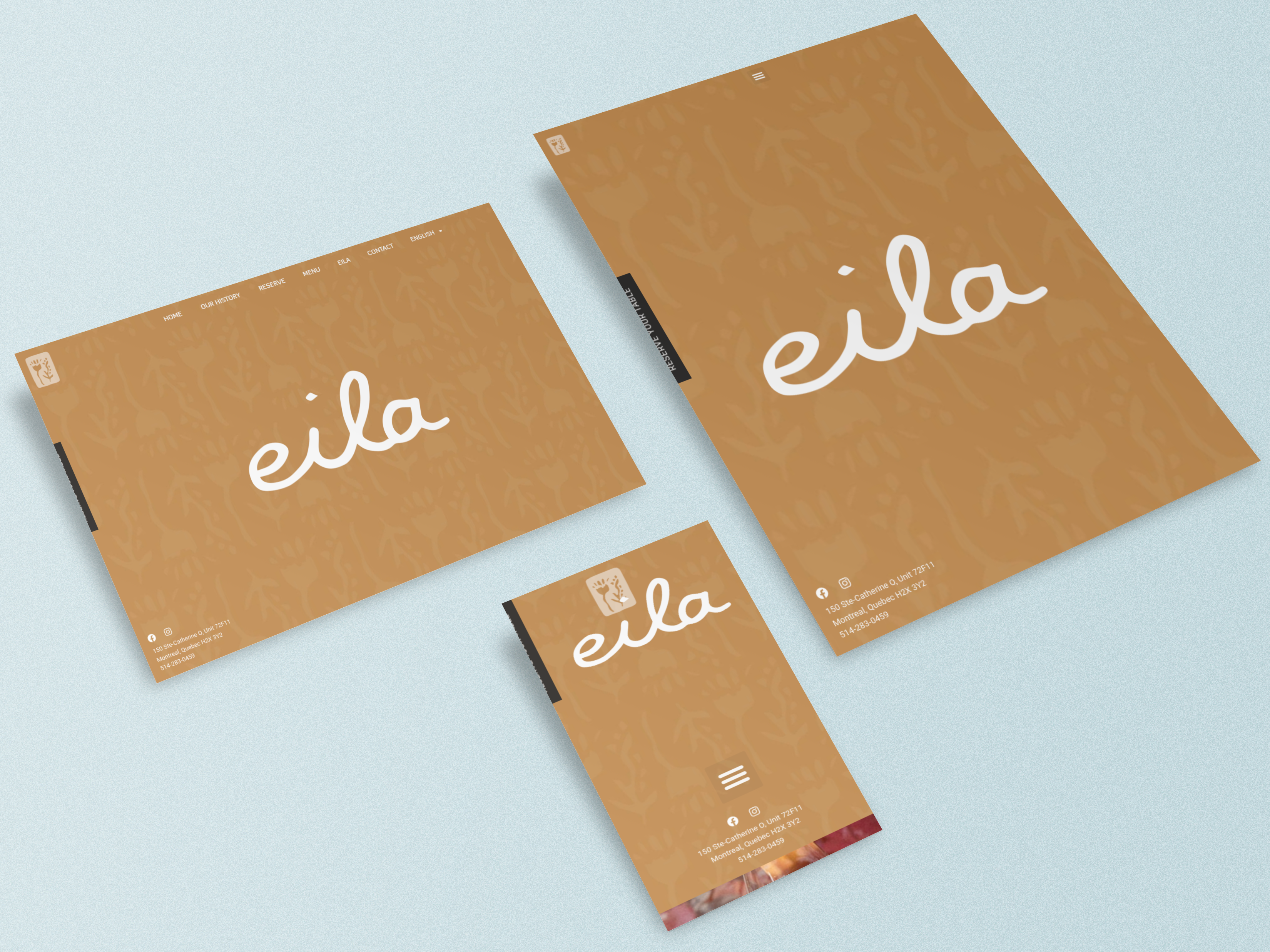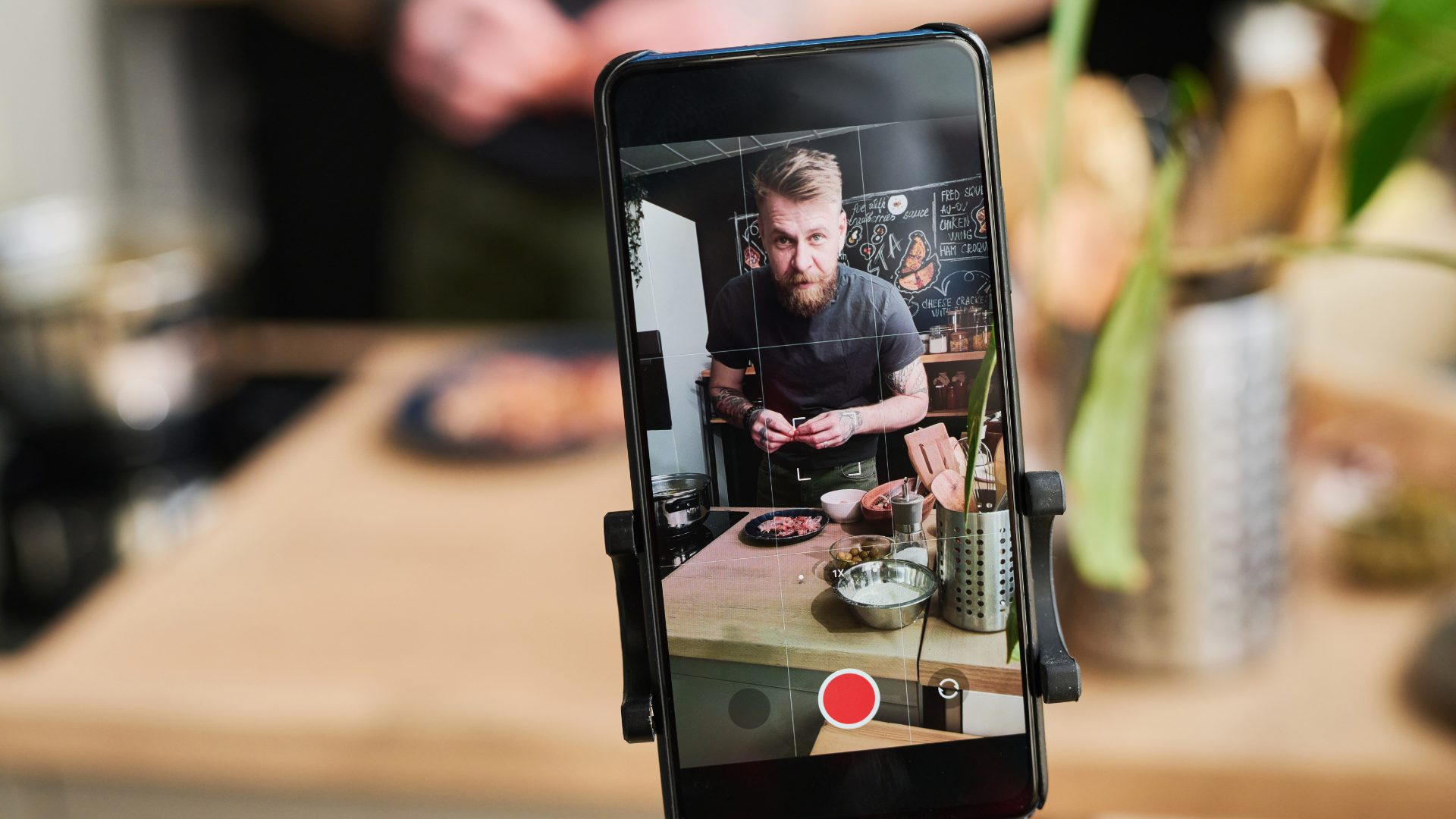Why Your Website Needs to Be Responsive
Simply having a website isn’t enough. With people accessing content on a wide range of devices, from smartphones to desktops, your site needs to adapt seamlessly. Enter responsive web design—an approach that ensures your site looks great and works flawlessly, no matter the screen size.
What Is Responsive Web Design?
Responsive web design allows your website to automatically adjust its layout, images, and content to fit the device it’s being viewed on. Whether it’s a tablet, smartphone, or desktop, your site will provide a consistent and user-friendly experience.
Why You Need It
1. User Experience First
A responsive website ensures visitors enjoy an intuitive, smooth experience, whether they’re browsing on mobile or desktop. This keeps them engaged and more likely to convert.

2. Mobile Traffic Matters
With over half of web traffic coming from mobile devices, optimizing for mobile is crucial. If your site isn’t responsive, you’re potentially losing out on a big chunk of visitors and customers.
3. Boost SEO
Google prioritizes mobile-friendly websites in search results. A responsive design can help you rank higher and drive more traffic.
4. Cost-Effective
Instead of creating separate websites or apps for different devices, a responsive design saves time and resources by managing everything on a single platform.
5. Future-Proof Your Site
Responsive web design ensures your site will work on new devices and screen sizes, keeping you ready for the future of digital.
Our Final Thoughts
Responsive web design is no longer a nice-to-have; it’s essential. By making sure your site adapts to any device, you’re improving user experience, boosting your search engine ranking, and preparing your business for the future.
Ready to go responsive? We’re here to help. Reach out to start your project!
Is the rise of virtual influencers and AI personalities the future of social media?
Virtual influencers, AI-generated personalities with lifelike characteristics, are taking the social media world by storm. These digital personas are created by teams of designers, writers, and marketers, and they offer unique opportunities and challenges for brands looking to engage with their audiences in innovative ways.
Authenticity and Engagement
Despite being artificial, many virtual influencers have amassed large followings due to their carefully crafted personas and engaging content. They can interact with followers, share personal stories, and promote products just like human influencers, but with complete control over their image and messaging.
Cost-Effective Campaigns
Working with virtual influencers can be more cost-effective than partnering with human influencers. There are no scheduling conflicts, and the brand has full control over the content and timing of posts. This allows for more flexible and consistent campaign strategies.

Ethical Considerations
The use of virtual influencers raises ethical questions, particularly regarding transparency and authenticity. Brands must be clear about the artificial nature of these influencers to maintain trust with their audience. Additionally, the portrayal of idealized, flawless digital personas can impact societal beauty standards and mental health.
Future Potential
The technology behind virtual influencers is rapidly advancing, offering exciting possibilities for the future. As AI continues to evolve, these digital personalities will become even more sophisticated and lifelike, potentially transforming how brands approach influencer marketing.
Image Description: [Insert an image of a virtual influencer interacting with followers on a social media platform.]
Virtual influencers represent a fascinating frontier in social media marketing. While they offer cost-effective and fully controllable campaign options, brands must navigate ethical considerations and transparency. As technology advances, the role of virtual influencers is likely to grow, presenting new opportunities for innovative and engaging marketing strategies. Brands that embrace this trend can stay ahead of the curve and captivate their audience in novel ways.
The Future of augmented reality in online shopping
Neuro-marketing combines neuroscience and marketing to understand how consumers’ brains respond to advertising and marketing stimuli. By leveraging insights from neuro-marketing, businesses can create more effective and impactful ad campaigns that resonate deeply with their target audience.
1. Emotional triggers
Emotions play a crucial role in decision-making. Neuro-marketing research reveals which emotional triggers can make advertisements more compelling. By incorporating elements that evoke joy, surprise, or empathy, brands can create stronger emotional connections with their audience, leading to higher engagement and conversion rates.
2. Attention and memory
Understanding how the brain pays attention and retains information is essential for creating memorable ads. Neuro-marketing studies show that incorporating unique visuals, storytelling, and repetition can enhance the memorability of advertisements. Brands can use these insights to design campaigns that leave a lasting impression on viewers.

3. Enhanced product visualizationAR allows customers to visualize how products like furniture and home decor will look in their space. This leads to more confident purchasing decisions. For example, a shopper can see how a sofa fits in their living room and whether it matches their existing decor.
4. Personalized shopping experiencesAR can offer personalized shopping experiences based on individual preferences and past behaviors. This makes the shopping experience more engaging and tailored to each customer. Personalized AR experiences can recommend products that suit the shopper’s style and needs.
Augmented Reality is poised to redefine the online shopping experience by making it more interactive, immersive, and personalized. As technology continues to advance, AR will offer consumers unprecedented ways to engage with products before making a purchase, reducing uncertainty and enhancing satisfaction. Embrace the future of shopping today and explore how AR can transform your e-commerce experience.
Neuro-Marketing: How understanding the brain can revolutionize your ad campaigns
Neuro-marketing combines neuroscience and marketing to understand how consumers’ brains respond to advertising and marketing stimuli. By leveraging insights from neuro-marketing, businesses can create more effective and impactful ad campaigns that resonate deeply with their target audience.
1. Emotional triggers
Emotions play a crucial role in decision-making. Neuro-marketing research reveals which emotional triggers can make advertisements more compelling. By incorporating elements that evoke joy, surprise, or empathy, brands can create stronger emotional connections with their audience, leading to higher engagement and conversion rates.
2. Attention and memory
Understanding how the brain pays attention and retains information is essential for creating memorable ads. Neuro-marketing studies show that incorporating unique visuals, storytelling, and repetition can enhance the memorability of advertisements. Brands can use these insights to design campaigns that leave a lasting impression on viewers.

3. The Power of color
Colors can evoke specific emotions and influence perceptions. Neuro-marketing research provides insights into how different colors impact consumer behavior. For example, red can create a sense of urgency, while blue can evoke feelings of trust and calmness. By strategically using colors in their ads, brands can enhance their message and drive desired actions.
4. Subconscious influences
Much of consumer behavior is driven by subconscious processes. Neuro-marketing helps brands understand these subconscious influences, such as implicit associations and biases. By aligning their messaging with these subconscious cues, brands can create more persuasive and effective advertisements.
Neuro-marketing offers a scientific approach to understanding consumer behavior, providing valuable insights that can revolutionize ad campaigns. By tapping into emotional triggers, enhancing attention and memory, leveraging the power of color, and understanding subconscious influences, brands can create more compelling and effective advertisements. Embracing neuro-marketing techniques can help businesses connect with their audience on a deeper level, driving engagement and increasing conversions.
Top web design trends to watch in 2024
Web design is constantly evolving, and 2024 brings new trends that can elevate your online presence. Staying updated with these trends can help your website remain engaging and user-friendly. Here are the top web design trends for 2024:
1. Dark mode Dark mode continues to gain popularity for its aesthetic appeal and energy-saving benefits. It reduces eye strain for users, especially in low-light environments, and gives websites a modern, sleek look.
2. Micro-interactions Micro-interactions enhance user engagement by providing feedback on user actions. Examples include animation effects when a button is clicked or subtle hover effects. These small details improve the overall user experience.

3. 3D elements Integrating 3D elements and visuals into web design can make your website stand out. These elements can create a more immersive and engaging experience for users, making the website more memorable.
4. Minimalistic design A minimalistic approach focuses on simplicity and functionality. Clean layouts, ample white space, and minimal text help users navigate the site more easily and find the information they need quickly.
Embracing these web design trends can significantly enhance your website’s appeal and functionality. By adopting dark mode, incorporating micro-interactions, adding 3D elements, and simplifying your design, you can create a website that not only looks modern and stylish but also provides a superior user experience. Staying ahead of these trends ensures that your site remains competitive and effective in engaging visitors.
Leveraging user-generated content for brand growth
User-generated content (UGC) is a powerful tool for building brand authenticity and engaging your audience. By leveraging UGC, brands can foster a sense of community and trust. Here are ways to effectively utilize UGC:
1. Encourage reviews and testimonials Encourage customers to leave reviews and testimonials. Highlighting these on your social media platforms can build trust with potential customers. Positive reviews serve as social proof of your brand’s quality.
2. Create branded hashtags Create and promote branded hashtags to encourage users to share their experiences with your products. This not only increases visibility but also allows you to easily track and showcase UGC.

3. Host contests and giveawaysHosting contests and giveaways incentivizes users to create and share content related to your brand. This can significantly increase engagement and generate a wealth of UGC.
4. Feature UGC on your platformsRegularly feature user-generated content on your social media channels and website. This makes customers feel valued and appreciated, encouraging them to continue sharing their experiences.
Leveraging user-generated content (UGC) is a strategic approach to fostering brand authenticity and engaging your audience. By encouraging reviews and testimonials, creating branded hashtags, hosting contests and giveaways, and featuring UGC on your platforms, you can build a community of loyal customers who trust and promote your brand. Embracing UGC not only boosts your brand’s credibility but also enhances its visibility and engagement across social media channels. As you integrate UGC into your marketing strategy, you’ll find that your customers become some of your most valuable advocates.
How to green your digital marketing strategy
Consumers are increasingly conscious of their environmental impact, and digital marketing strategies are evolving to reflect this shift. Greening your digital marketing strategy is not just about sustainability; it’s about aligning with your audience’s values and standing out in a crowded market. Here’s how you can integrate eco-friendly practices into your digital marketing strategy:
1. Sustainable Content Creation
Focus on creating digital content that promotes sustainability. Use your blog, social media platforms, and email campaigns to share tips on eco-friendly practices, highlight your brand’s sustainability efforts, and educate your audience on environmental issues.
2. Green Web Hosting
Choose web hosting providers that use renewable energy sources. Green web hosting reduces your carbon footprint and aligns your brand with environmentally conscious practices. Highlighting this choice in your marketing materials can resonate with eco-conscious consumers.

3. Digital Campaigns for Environmental Causes
Launch digital campaigns that support environmental causes. Partner with eco-friendly organizations, run social media campaigns to raise awareness about sustainability, and encourage your audience to participate in green initiatives. This builds community engagement and reinforces your brand’s commitment to sustainability.
4. Energy-Efficient SEO
Practices Optimize your website for energy efficiency. Use efficient coding practices, compress images, and reduce the number of server requests to minimize your site’s energy consumption. These practices not only improve your site’s performance but also contribute to a greener internet.
5. Eco-Friendly Email Marketing
Design email marketing campaigns that promote sustainable living. Share eco-friendly tips, highlight green products, and encourage your subscribers to adopt sustainable practices. Using digital newsletters to communicate your brand’s green initiatives can build stronger connections with your audience.
Integrating eco-friendly practices into your digital marketing strategy can help you meet the growing demand for sustainability and differentiate your brand in the market. Embracing green initiatives not only benefits the environment but also builds a stronger, more trusted relationship with your customers. As you implement these practices, remember that every small step contributes to a larger positive impact. Start greening your digital marketing strategy today and lead the way toward a sustainable future.
SEO essentials: A beginner's guide
Search engine optimization (SEO) can seem daunting, but it’s crucial for increasing your website’s visibility. Here’s a beginner-friendly guide to get you started.
Understand your audience
- Knowing who you’re targeting is the first step in SEO. Conduct research to identify the needs, interests, and search behaviors of your audience. Tools like Google Analytics and surveys can be invaluable here.
Keyword research
- Keywords are the foundation of SEO. Use tools like Google Keyword Planner, Ahrefs, or SEMrush to find relevant keywords with a good search volume and low competition. Focus on long-tail keywords, which are more specific and often easier to rank for.
On-page optimization
- Optimize your content by incorporating your keywords naturally. Use them in your titles, headings, and throughout the body of your text. Ensure your meta descriptions are compelling and include your primary keyword. Don’t forget to use alt text for images and ensure your URLs are clean and descriptive.
Quality content
- Content is king. Create high-quality, informative, and engaging content that provides value to your audience. Regularly update your blog with fresh content, as search engines favor sites that are frequently updated.
Technical SEO
- Ensure your website is technically sound. This includes having a mobile-friendly design, fast loading speeds, and an SSL certificate. Use tools like Google Search Console to monitor your site’s health and identify any issues that need fixing.
User experience (UX)
- A good user experience keeps visitors on your site longer, reducing bounce rates and signaling to search engines that your site is valuable. Focus on easy navigation, a clean design, and quick access to important information.
Backlinks
- Backlinks from reputable websites are like votes of confidence for your site. Aim to get backlinks by creating shareable content, guest posting, and building relationships with influencers in your industry.
Track and analyze
- Regularly track your SEO performance. Use tools like Google Analytics and SEMrush to analyze your traffic, keyword rankings, and other metrics. Adjust your strategies based on what the data tells you.
SEO is a continuous process that requires patience and persistence. By following these fundamentals, you’ll be well on your way to improving your site’s visibility and attracting more visitors.
Building genuine connections on social media
In a world inundated with digital noise, genuine connections on social media have become more valuable than ever. Here’s how you can foster authentic engagement and build lasting relationships with your audience:
- Humanize your brand: Show the human side of your brand by sharing behind-the-scenes glimpses, employee spotlights, and user-generated content. People connect with authenticity.
- Listen and respond: Actively monitor your social media channels for comments, messages, and mentions. Respond promptly and genuinely to build trust and rapport.
- Create meaningful content: Focus on creating content that resonates with your audience’s interests, challenges, and aspirations. Quality over quantity is key to fostering engagement.
- Encourage user participation: Invite your audience to share their thoughts, opinions, and experiences. Conduct polls, ask questions, and encourage user-generated content to foster a sense of community.
- Be consistent: Consistency is crucial for building trust and credibility. Maintain a regular posting schedule and adhere to your brand voice and values across all social media platforms.
- Show appreciation: Take the time to thank your followers for their support, feedback, and engagement. Genuine appreciation goes a long way in building strong relationships.
- Go beyond self-promotion: While it’s important to promote your products or services, focus on providing value to your audience first. Share helpful tips, industry insights, and relevant news to position yourself as a trusted resource.
By prioritizing genuine connections over vanity metrics, you can cultivate a loyal and engaged community on social media that will support your brand for years to come.
The power of storytelling in web development
Storytelling isn’t just for bedtime tales or novels; it’s a powerful tool in web development too. By weaving narratives into your website design, you can captivate visitors and leave a lasting impression. Here’s why storytelling matters in web development:
- Establishing connection: Stories create an emotional connection with your audience, making them more likely to engage with your website and brand. When visitors resonate with the story you tell, they feel a sense of belonging, fostering loyalty and trust.
- Communicating values: Through storytelling, you can effectively communicate your brand’s values and mission, resonating with your target audience on a deeper level. By sharing stories of your brand’s journey, values, and impact, you humanize your brand and connect with customers on an emotional level.
- Enhancing user experience: Compelling narratives enhance the user experience by guiding visitors through your website in a seamless and engaging manner. By incorporating storytelling elements such as engaging visuals, interactive features, and narrative-driven content, you can create a memorable and immersive browsing experience.
- Building trust: Authentic storytelling builds trust and credibility, as it allows visitors to connect with the human side of your brand. When you share authentic stories that resonate with your audience, you demonstrate transparency and authenticity, building a stronger connection and fostering trust.
- Differentiation: In a crowded online space, storytelling sets you apart from competitors by showcasing what makes your brand unique and memorable. By sharing compelling stories that highlight your brand’s personality, values, and mission, you differentiate yourself from the competition and create a distinct identity in the minds of your audience.
Incorporating storytelling into your web development strategy can transform your website from a static platform into a dynamic storytelling experience.



